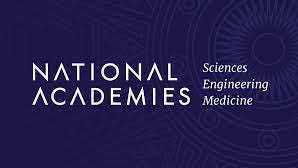Transportation National Academy Of Sciences Report Slams Ligado Diana Furchtgott-Roth Contributor Opinions expressed by Forbes Contributors are their own. I write on transportation and tech topics shaping tomorrow’s news. Following New! Follow this author to stay notified about their latest stories.
Got it! Sep 14, 2022, 05:44pm EDT | New! Click on the conversation bubble to join the conversation Got it! Share to Facebook Share to Twitter Share to Linkedin The National Academy of Sciences has released its long-awaited study on the effects of Ligado Networks operating a terrestrial network next to spectrum currently used for the Global Positioning System. Based on the new study, commissioned by Congress in 2021, the Federal Communications Commission should revoke Ligado’s permission to operate. GPS uses a constellation of 32 satellites to provide positioning, navigation, and timing services for transportation, as well as the electricity grid, financial services, agriculture, construction, and transportation.
Until a backup or complement is developed, Americans depend solely on GPS for many routine activities. In 2020 the FCC granted an application from Ligado Networks, based in Virginia, to operate a terrestrial network using spectrum next to the bands reserved for GPS. If deployed, the network would potentially interfere with some of the hundreds of millions of devices that use GPS for positioning, navigation, and timing.
As the National Academy notes, this could disrupt everything from car navigation and helicopter medivac operations, to precision agriculture, surveying, and weather forecasts. The threat arises from the power of Ligado’s signals . They will be two billion times as powerful as received GPS signals.
GPS signals are 20 watts at the satellite, which is 20,000 kilometers away from Earth. Earth-based Ligado’s signals could easily, albeit unintentionally interfere with a range of GPS receivers. This interference is the reason that in 2020 the National Telecommunications and Information Administration—on behalf of the entire Executive branch— asked the FCC to reconsider, citing “irreparable harms to federal government users of the Global Positioning System.
” Although this remains the view of NTIA, the FCC has not reconsidered. The National Academy of Sciences concludes that high-precision receivers will experience “significant harmful interference from Ligado emissions as authorized by the FCC. ” These include receivers for construction, agriculture, and surveying.
MORE FOR YOU Tesla Challenger Polestar Powers Up With Nasdaq Listing Plan Valuing It At $20 Billion Driver Killed By His Own Car Door While Waiting In Line At Fast-Food Drive-Thru, Providing Cautionary Insights For AI Self-Driving Cars Tesla Cofounder’s Recycling Startup Plans To Become EV Battery Material Powerhouse In a classified Appendix, the report presents evidence that deployment of the Ligado network will be harmful to Department of Defense operations. The report states that most receivers used for civil aviation, general navigation, timing, or cellular purposes will not experience “significant harmful interference” from Ligado emissions—implying that interference with these receivers will not cause a problem. However, the report admits, some will be affected.
If Ligado emissions conservatively affect 10 percent of devices, then tens of millions of devices will not show accurate location and timing. This means helicopters won’t find their way to accidents and firefighters won’t find their way to burning homes. In fact, the report admits that the public safety helicopters used to rescue crash victims and to fight fires will be affected because their operations are not limited to airports.
Such helicopters are also used by the U. S. Army and the National Guard.
The National Academies’ report states that Ligado interference might occur precisely when these aircraft are trying to rescue people who have crashed in low-visibility conditions. It is troubling that the report rejects the international standard of 1 decibel (db) increase in the noise floor, which countries all over the world use to distinguish harmful interference from tolerable interference. (This means a 1 db decrease in the carrier-to-noise ratio, as observed by the receiver.
) This widely-used safety criterion ensures that GPS users do not suffer harmful interference. The National Academies’ report stated that this criterion is too stringent, “although the 1 db criterion precludes harmful interference in virtually all use cases. ” When lives are at stake in the transportation world, it appears as though extra safety should be assured, not compromised.
While the FCC’s order requires Ligado to pay for damages to federal receivers, it does not require the company to compensate private-sector companies, such as pipeline operators, helicopter terrain awareness warning systems, car navigation systems, and power plants — costs that could run into the tens of billions of dollars. In response to the report, the National Telecommunications and Information Administration stated , “The Report from the National Academies indicates that Ligado’s terrestrial operations would cause harmful interference to GPS devices and that a number of the FCC’s mitigations would be practically unworkable. “ With over $2 trillion allocated for infrastructure and climate change—including roads and bridges, renewable energy linked to the grid, and electric vehicles—reliable GPS is more important than ever.
The National Academy of Science study underscores what the Executive Branch concluded over two years ago: Ligado transmissions will interfere with the operation of infrastructure, public safety, and national defense. It’s time for the FCC to withdraw the Ligado license modification. Follow me on Twitter or LinkedIn .
Check out some of my other work here . Diana Furchtgott-Roth Editorial Standards Print Reprints & Permissions.
From: forbes
URL: https://www.forbes.com/sites/dianafurchtgott-roth/2022/09/14/national-academy-of-sciences-report-slams-ligado/



